Archive for the ‘Newport Beach hair transplant’ Category
Wednesday, December 16th, 2009
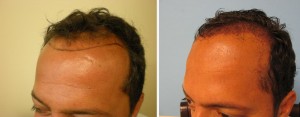 Before and After Pictures; First Day After Hair Transplant Well, on the first day we’re usually forced to kick out our patients from our office because they grow so fond of us and don’t want to leave! Well, not all the time. But our patients do like us, which is something we’re very proud of.
On a more serious note, I’ll say this: Transplanting hair is a very delicate and painstaking procedure. After a hair transplant is over, it is of utmost importance to constantly monitor and properly care for the transplanted area. US Hair Transplant’s policy is to book a patient for a hair washing the day after his or her transplant. The hair washing takes about half an hour. At our office, we use thick shampoo to clean the transplanted hair grafts. We make sure to be gentle and only spread foam and dab the transplanted area. After two minutes, we rinse off the shampoo with water.
During the first visit, another area we wash is the donor area. As a parting gift, we provide our patients with a sponge, which has a soft brush on one side. The brush is used to clean the donor area and the sponge for the transplanted area. When it comes to washing the donor area, a patient may use a bit of aggression as the wounds are stapled or sutured. The soft brush can be rubbed, ever so gently, on the back of the patient’s head to remove scabs and extra debris from the surgery.
Remember: hair washing ought to be done twice daily for first four days, after which it can be done once a day.
Because of dedication to patients, we teach them how to properly care for the transplanted area. The first four days are important, as the grafts in the transplanted area may dislodge if they aren’t washed with care. After the first four days, the patient can go back to washing his hair the way he did before surgery as the grafts, at this point, are most likely sealed and part of the person’s scalp even if the hair is moved. The remaining follicles are able to generate new hairs.
To prevent scabs, we urge our patients to wash hair using our particular technique. It’s important to note several studies have shown that scabbing may prevent transplanted hair growth. After seven days from day of surgery, there ought not to be any scabs. If scabs still appear after the seven days, it means washing wasn’t done the right way and the patient must start being a bit more aggressive in his washing technique.
After four days have passed, patients can wash their hair twice a day. In addition, patients ought to let the foam alone for ten minutes to let scabs soften. Afterward, patients can use the soft brush we provide to comb their hair in the direction of their other hairs.
Also we make sure to let our patients know to not dunk their head in water the first week after the transplant, and to try not to bend their head too frequently during the first month. Also, the first six months after surgery, we tell our patients to keep the transplanted area away from sunlight.
As time passes, the transplanted hair will grow and be able to protect the skin grafts from the sun’s ultraviolet rays.
Tags: after hair restoration surgery, after hair transplant, care after hair transplant, couple days after hair transplant, few days after hair transplant, hair transplant, hair transplants
Posted in Bakersfield hair transplant, California hair transplant, hair transplant, men hair restoration, Newport Beach hair transplant, Orange County hair transplant | No Comments »
Monday, November 30th, 2009
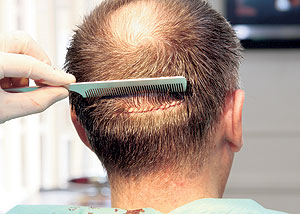 Hair transplant surgery is designed to restore hair in men and women depending on the condition. For most, this is done in the event of male or female patterned hair loss. Others may use this procedure for other areas of the body that may have once had hair like the eyebrows and others to place hair like facial hair or where they may see fit. The only remaining issue is the scar that remains in the donor area after a hair transplant procedure. Hair transplant surgery is designed to restore hair in men and women depending on the condition. For most, this is done in the event of male or female patterned hair loss. Others may use this procedure for other areas of the body that may have once had hair like the eyebrows and others to place hair like facial hair or where they may see fit. The only remaining issue is the scar that remains in the donor area after a hair transplant procedure.
Can this be avoided? Is there any way to remove or conceal an existing scar?
Depending on the procedure, the scar can either be avoided or minimized. Follicular unit extraction (FUE) is an advanced hair transplant procedure where hair graft units are selectively extracted and refined without leaving a linear scar in the donor area. This technique has also been used to transplant hair into an existing hair transplant scar. This is one technique used to conceal a donor area scar but it does not remove it. The objective is to conceal the scar as much as possible.
For those patients looking into hair transplant surgery, follicular unit transplantation (FUT) is the golden standard in hair restoration. There are ways to minimize the scar’s appearance. In most cases, a hair transplant surgeon can use single or dual trichophytic closure to minimize the visibility of the scar in the donor area. This technique allows hair to grow in through the scar creating an illusion and concealing the scar. Patients whom have had a hair transplant procedure can undergo scar revision and have the existing scar excised and reclosed using this technique if it has not already been done.
As stated, the objective is to minimize the visibility of the donor scar. If the patient is undergoing hair transplant surgery through FUT, you must bear in mind that a scar will still be present. It has been noted that Botox can also be used to avoid additional stretching of the scar further preventing visibility. This should be taken care of right after a hair transplant procedure. These options should be discussed with your hair transplant surgeon to assure that you are getting exactly what you want out of your hair transplant procedure.
Tags: hair restoration scar, hair scar, hair transplant scar, how to remove hair transplant scar, remove hair restoration scar, remove hair transplant scar, remove scar
Posted in Bakersfield hair transplant, California hair transplant, hair transplant, men hair restoration, Newport Beach hair transplant, Orange County hair transplant | No Comments »
Saturday, November 28th, 2009
Q:
To Dr. Mohebi:
17 days have passed since my hair restoration procedure at your office in the San Fernando Valley. As I remember, I had an FUT procedure with bi-lateral trichophytic closure performed for about 650 grafts to reinforce my front hairline. I want to make sure to say first off that I’m extremely grateful for the time you took to answer the questions I had in a well-informed and honest manner. Also, I’d like to say I had a wonderfully positive experience and was treated kindly by everyone at your office. It was a much different experience than the first time I had a hair transplant with someone else.
Included are five photographs (recently taken) of my grafts about fourteen days after the surgery. I got rid of the scabs on the grafts and donor area. I noticed the hair grafts are now growing, and a few have fell off the scalp. I have a few inquiries.
- One snapshot reveals, at the pinnacle of the front hairline, a red circle and the particular area looks bald and bare. Do you remember planting any grafts in this part of my head. I expected this part to have hair growing on it because the front tip sticks out.
- The donor area feels sensitive and it’s still painful but also numb in other parts. I’m wondering if this is what usually happens after a fortnight.
- The back of my head (donor area) feels stretched and makes it hard for me to look at my shoes or look down when urinating. It’s a bit painful. I don’t think I had this issue after my first hair transplant. Or maybe the pain wasn’t as prolonged as it is now. Maybe it’s because the bi-lateral trichophytic closure is on another scarline? When do you think the pain in my donor site will go away?
Thanks again for the well-done procedure. I look forward to hearing back from you.
A:
It warms my heart that you enjoyed your visit with us when getting your hair transplant. You underwent a donor scar revision procedure to enhance the look of your donor linear scar on the back of your head with a two sided tricophytic closure to ensure hair growth into the scar for the highest invisibility. About your questions, I’ve written below my responses to them in chronological order.
- Intentionally, we made the frontal area irregular so it wouldn’t appear to look linear and reconstructed. After the hair transplant, you ought to have lost a good number of grafts. The way your hair looks now and is not the way it will look eventually. I’d advise you to wait at least another six or seven months so all your hair will have grown out. It will look much better.
- As part of the healing process, a bit of inflammation is normal and will appear about two weeks after a hair transplant procedure. But, if the inflammation doesn’t eventually go away or if it becomes more inflamed, come to my office immediately.
- You may feel more pain and stretching on the back of your head because you’ve had previous surgeries. There wouldn’t be as much pain in the donor site if you hadn’t ever had a hair transplant. Try not to look down too much or in a herky-jerk manner for the following eight weeks after surgery because there’s a risk of stretching out the donor scar. On the second month, if there’s still pain, visit me and we’ll take a look at it. In the meantime, if there are other questions you may have about hair growth or other inquiries regarding your hair transplant, call and make an appointment to see me.
I’m eager to meet with you again in later visits.
Tags: bilateral tricophytic closure, hair grafts, hair transplant scar, pain after hair transplant, scabs of hair transplant, tension after hair transplant, tension of donor wound, trichophytic closure, tricofitic, tricophytic closure
Posted in donor scar, hair transplant, men hair restoration, Newport Beach hair transplant, Orange County hair transplant | No Comments »
Thursday, November 19th, 2009
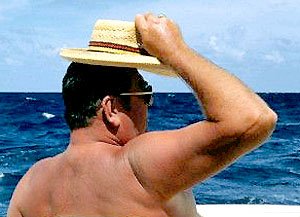
Q:
Not too long ago, I had a hair transplant (using FUE). Things were OK until several months after the transplant. I spent some time having fun in the sun, and it was maybe close to triple digit degrees outdoors. As soon as I got back to my house, I noticed my scalp in the transplanted area had turned white. It looked like the skin on my head had been scorched. But I didn’t think it was a big deal and I kept on using the Minoxidil with Betaderm spray, which my doctor highly recommended.
A few weeks later, the top of my head (which had been grafted) began to peel and the skin fell off (like a sun burn). And there were a few transplanted hairs which fell off as well, with the skin. This really alarmed me. After about eight weeks, the scalp seems to have healed, although there is some redness in places; but, overall, it seems to be OK. But, I’m a bit worried about the condition of my after-playing-in-the-sun scalp. I know it was probably a sun burn, but I just hope my grafts weren’t damaged beyond repair. I’ve done some research on skin consequences of sun burn, but I wonder if the grafts can ever fully recover from the exposure to the ultra-violet rays. I know if my skin becomes more tan, it’s OK. But about my grafts, I’m really concerned about them.
I need answers, doc.
Yours truly,
A beach bum with a hair transplant
A:
Hey beach bum,
Skin and scalp which has been exposed to the sun’s rays for long periods of time damage both native hairs and transplanted hair. The consequences can be especially harmful if a person who has had a hair transplanted is not under an umbrella or is not wearing a hat of some sort. The scalp skin could be damaged that way. It is best to stay out of the sun after a few minutes, at most. For the first six months, hair transplant patients may want to use sunscreen or wear a hat to prevent hair loss and to guard against permanent damage to hair follicles.
For those who don’t like to wear hats or other types of protective head wear ought to guard their hair as if their financial stability depended on it. Make sure your hair density increases to the point in which your hair follicles cover your entire scalp and so the scalp skin is not exposed to the sun’s scorching rays (especially during summer).
I can’t give you a verdict on whether your newly transplanted hair is permanently damaged. I’m sure I don’t have to tell you this, but I’ll say it anyway in case there are people reading this blog who are in a similar situation: from now on, be very careful about your scalp’s sun exposure. And just kick-back and wait a while to see if the damaged hair grows back.
Remember, after hair transplant care is very important, if not crucial to the longevity of your hair restoration results.
Tags: after hair transplant, complications, fue, hair loss, hair transplant surgery, men hair loss, sun exposure
Posted in Bakersfield hair transplant, California hair transplant, hair transplant, men hair restoration, Newport Beach hair transplant, Orange County hair transplant | No Comments »
Wednesday, October 7th, 2009
 In a recent email sent to our office from a recent patient, he writes in regards to his scalp evaluation and regarding Propecia (Finasteride). He asks, “Could finasteride worsen the hairline due to the rise of testosterone?” and, “if there’s any safe and minor treatments to slow the progress of maturation or reverse it that you would recommend at this stage?” In a recent email sent to our office from a recent patient, he writes in regards to his scalp evaluation and regarding Propecia (Finasteride). He asks, “Could finasteride worsen the hairline due to the rise of testosterone?” and, “if there’s any safe and minor treatments to slow the progress of maturation or reverse it that you would recommend at this stage?”
Early stages of male patterned hair loss may not always be obvious enough to be differentiated from normal levels of miniaturized hair during scalp microscopic evaluation. Propecia (finasteride) is still the most recommended hair loss medication to prevent additional balding. Some patients have even been prescribed Propecia without proper diagnosis or documentation of their hair loss condition making it difficult to tell if they have gotten better since they started or worsened.
Propecia (finasteride) is designed to block DHT (Dihydrotestosterone) which is the main cause of male patterned hair loss. With this in mind, finasteride cannot deteriorate your hair loss or cause changes in the hairline. Maturation of the hairline is normal in all men and should not be confused with balding. We also do not have any further recommendation on medications that can stop the maturation of the hairline.
Tags: beverly hills, Beverly Hills Hair Restoration, finasteride, hair line, hair loss, hair transplant surgery, hairline maturation, hairline recession, male patterned hairloss, men hair loss, miniaturization, testosterone, young patients with hair loss
Posted in Bakersfield hair transplant, California hair transplant, hair transplant, men hair restoration, Newport Beach hair transplant, Orange County hair transplant | No Comments »
Tuesday, May 19th, 2009
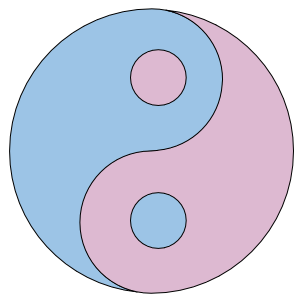 “How can a male hairline be converted to a female pattern?” “How can a male hairline be converted to a female pattern?”
Although not always a very typical question or request, it is generally an issue most male to female transgender patients have to deal with. This is usually due to maturation of the hairline which may include recession of the frontal corners in mature male patterned hairline. This is what defines the frame of a male face as “masculine”. This can easily be restored through hair transplant surgery through follicular unit transplantation.
“I am already taking Propecia and Spironolactone to block my testosterone effect.”
Anti-testosterone medication can help minimize the effect of miniaturization or the balding of the hair connected with male patterned baldness but it does not stop the balding process completely. This is due to testosterone still being produced by the testicles. Post operative transgendered patients whom have had removal of their testicles as part of a transgender procedure can eliminate testosterone. This in turn can stop the process of male pattern hair loss in patients who are genetically prone to DHT (dihydrotestosterone).
Your hair transplant surgeon should have a good understanding of facial proportion and female hairline shaping in the process of transsexual hair transplantation. That is why transsexual hair transplantation should be treated meticulously and professionally. There are many different variants between a male and female hairline. This includes the location of the hairline from eyebrow level at mid frontal and laterals; temples need to be restored in a complete female shape; direction and orientation of hair shafts are also different between men and women. These little details and features must be meticulously cared for and that’s what can be expected through quality hair restoration for transgendered patients.
A hair transplant procedure is a good recommendation if you are looking into changing your hairline from a mature male hairline to a feminine one. This may also apply if you are suffering from male patterned baldness. We do recommend that you continue your regular medical treatment of anti-testosterone medication and a hair transplant to reshape the frame of your face. Maximum fullness and a perfect female pattern can generally be achieved through more than one procedure.
Tags: hair transplant surgeon, M-F Transgendered, trans gender, trans gender hair transplant surgeon, Trans women, transexual, transgender, transgender hair transplant, transse, transsexual, transsexual hair transplant
Posted in California hair transplant, hair loss medication, hair transplant, men hair restoration, Newport Beach hair transplant, Orange County hair transplant | No Comments »
Monday, February 9th, 2009
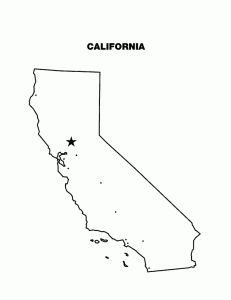 Many of our patients and the readers of our hair transplant blog often ask about celebrity hair transplants, their hair loss problems and hair restoration. California and in particular Los Angeles and Hollywood is the place for celebrities so hearing questions on celebrity hair transplantation is not unusual. We will not be able to reveal the name of the people who had a hair transplant; however gossip never sleeps in Hollywood. Many of our patients and the readers of our hair transplant blog often ask about celebrity hair transplants, their hair loss problems and hair restoration. California and in particular Los Angeles and Hollywood is the place for celebrities so hearing questions on celebrity hair transplantation is not unusual. We will not be able to reveal the name of the people who had a hair transplant; however gossip never sleeps in Hollywood.
Internet is full of the names of celebrities who many have had a hair transplant or plug surgery in the past. Many male celebrities with hair transplantation has been recognized and revealed by photographers. Many of celebrities had old and bad hair transplants and the others with the changes that were captured in the pictures from before and after hair transplants. Although wigs and hair systems have become very realistic these days, high resolution photography can reveal them at times. Many known celebrities had old technique hair transplants that used to be detectable and easy to distinguish. That is why they are bound to a certain hair style to cover their unnatural hairline. Many others have the problem fixed by doing a repair hair transplant using the follicular unit transplant. The good news is that many patients with unnatural hair line from old hair transplants could improve their appearance if their donor hair was not violated with old techniques of hair restoration or plug surgeries.
Hollywood, Los Angeles, Beverly Hills and Orange County are among the most concentrated areas in terms of the number of hair transplant surgeons. Keeping a good look in Hollywood world is not only important, but it could be life changing for many people especially if they are one of the people who is constantly followed by curious reporters.
US Hair Restoration
Orange County Hair Transplant
888-302-8747
info@ushairrestoration.com
Tags: hair system, hiar transplant, los angeles, wig
Posted in men hair restoration, Newport Beach hair transplant, Orange County hair transplant | No Comments »
Sunday, January 18th, 2009
Bakersfield, California: US Hair Restoration hair transplant clinic soon will start its first clinic in the city of Bakersfield in California. US Hair Restoration already has three other locations at Encino, Beverly Hills and Orange County. Dr. Parsa Mohebi the medical director of US Hair Restoration stated that since we are getting many patients for hair transplant from the city of Bakersfield in our Encino and Beverly Hills hair transplant offices, we decided to make it easier for our hair transplant patients from Bakersfield to find access to our services in their town.
Hair Transplant Surgeon Restores Patients Hair and Self-Confidence was the title of Dr. Mohebi’s recently published article in the the magazine of Beverly Hills Courier. In the article Dr. Parsa Mohebi, hair transplant surgeon and medical director of US Hair Restoration discusses the modern hair transplant techniques and the innovation that a perfect hair restoration is made of with the most natural results possible.
US Hair Restoration announced the opening of its hair restoration clinic in the city of Bakersfield, CA to serve Southern California, particularly the northern cities of Los Angeles such as Sacramento and Fresno and north of the San Fernando Valley. US Hair Restoration hair transplant clinics are also accessible and being used by the residents of Las Vegas, Nevada and Phoenix, Arizona.
From Beverly Hills Courier magazine:
We all know that nothing looks better than a full head of hair, and one of the best people to provide it is Dr. Parsa Mohebi, medical director of US Hair Restoration.
Dr. Mohebi specializes in several hair-transplant procedures:
- Follicular Unit Transplant (FUT) is the gold standard of hair-transplant surgery, Mohebi said, giving very natural results. A strip of donor scalp is removed and the follicles are prepared under microscopes and distributed in the bald area in the natural direction and orientation.
- Follicular Unit Extraction (FUE), also called non-invasive hair-restoration surgery, uses special biopsy devices to extract individual follicular units without having to remove a strip of skin; so there is no linear scar.
Not everyone needs FUE or follicular unit extractions hair transplant Mohebi says. But people who want to shave their head in the future for any reason may consider FUE because there is no visible evidence of surgery on the back of their head. There’s nothing to suture, and the small dot wounds are not detectable a few days after surgery.
Since the newly placed follicles are so fragile, patients return the next day to get their hair washed professionally, given special shampoo and taught how to take care of their hair at home. After five days, no special care is needed, Dr.Mohebi said.
Ten days after the surgery, patients return to have the donor site checked and staples removed for those who had them. Hair starts growing after three months, and is long enough to style and comb after ten to twelve months. The third follow up is at 10 months after the procedure.Continuing to pioneer in the field, Dr. Mohebi is the inventor of the Laxometer, a device to measure the laxity or mobility of the scalp. Laxity of the scalp is key in determining the size of the donor strip so that enough can be removed for bigger cases, and the wound can be closed without too much tension and the scaring will be minimal.
US Hair Restoration has Southern California Clinics in Encino, California, Orange County, Beverly Hills and now Bakersfield. US Hair Restoration also offers hair transplant services in Dubai, United Arab Emirates (UAE). To help people stay abreast of all that’s happening in the field of hair restoration, and to answer questions ( heard from Europe and China) Dr. Mohebi maintains the US Hair Transplant Blog to answer your hair loss and hair transplant questions.
Tags: Bakersfield hair transplant, California hair transplant, Dr. Mohebi, hair restoration clinic, hair transplant clinic, hair transplant surgeon, Orange County hair transplant
Posted in Bakersfield hair transplant, men hair restoration, Newport Beach hair transplant, Orange County hair transplant | No Comments »
Sunday, January 4th, 2009
Happy New Year from US Hair Restoration
I would like to wish you all a Happy New Year! Last year was a year of great achievements for our hair restoration offices in Orange County and Los Angeles area in Southern California. We are pleased to announce that we continued our research in hair loss treatment and hair restoration and were active at the medical meetings at an international level. I am proud that our articles on hair restoration were published on Hair Transplant Forum, the most prestigious journal of hair restoration surgery.
Our last two articles, Psychology of Hair Transplants and How to assess scalp laxity, were published on hair transplant forum international, both on the cover of the magazine within the last year. I have to be thankful for Dr. William Rassman and Dr. Jae Pack who assisted me with our studies and our invention: Laxometer.
My presentation at annual meeting of International Society of Hair Restoration Surgery (ISHRS) on Psycho-social impacts of hair restoration surgery on men was well received. Our new intention, Laxometer is being developed and I hope that it will be mass produced to be used in hair restoration field. Laxometer is a device that can help hair transplant surgeons to increase their precision in harvesting hair and making hair transplant a safer procedure for patients.
Adjacent to our accomplishments in hair restoration research and development, we have expanded our Medical Spa to provide a lot more cosmetic procedures to our patients under one roof. Our Encino, Beverly Hills and Orange County hair transplant offices facilitated the access of our patients to our quality services especially for the residents or Southern California. We also provided a great travel package for the patients who traveled from other states or other Countries to take advantage of our quality services. I need to thank our office staff and medical assistants for coordinating this process to make our procedures as smooth and pleasant as possible.
We all know that last year has been a challenging year for America and other countries financially. We at US Hair Restoration achieved reducing the rates of our procedures while maintaining a very high standard. We offered a variety of low rates and 0% interest finances for qualified patients to make our hair transplant procedures more affordable.
I am thrilled that I found many great friends during last year, individuals who I admire for their willingness to become a better person inside and out. I am grateful for my colleagues for not keeping it a secret and introduced their patients and friends to us. I also have to thank our previous patients who did not stop bragging about their new look after their hair restoration procedure with us.
Have a great New Year,
Parsa Mohebi, MD
Medical Director
US Hair Restoration
US Hair Transplant centers and USHR Med Spa
Tags: Announcements, Inventions, laxometer, Medical Spa, MedSpa, New Year, News, Parsa Mohebi, staff, us hair restoration, USHR, USHR Med Spa
Posted in men hair restoration, Newport Beach hair transplant, Orange County hair transplant | No Comments »
|
|






